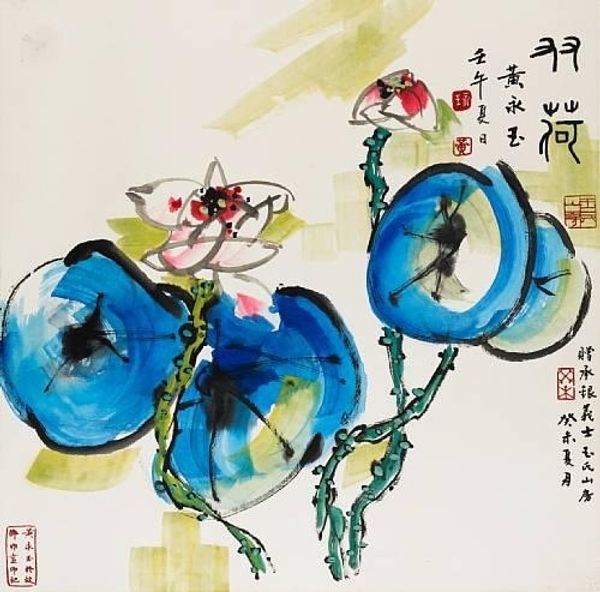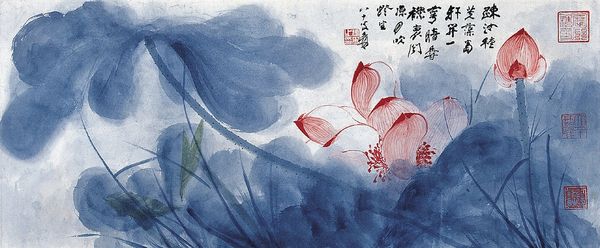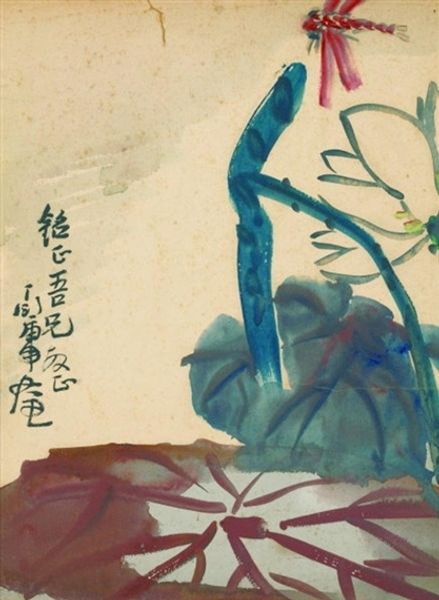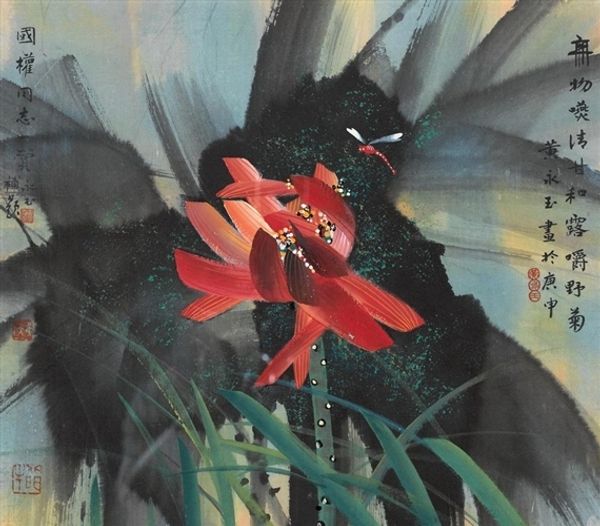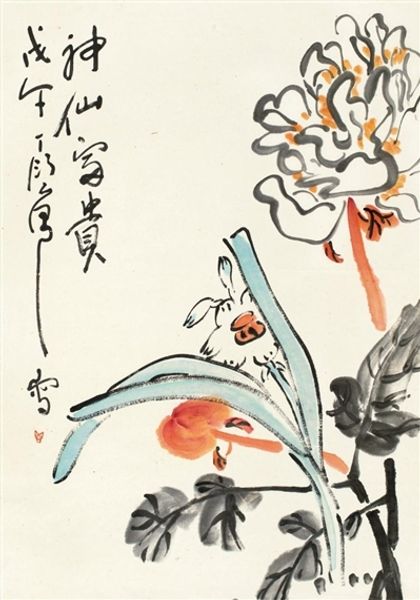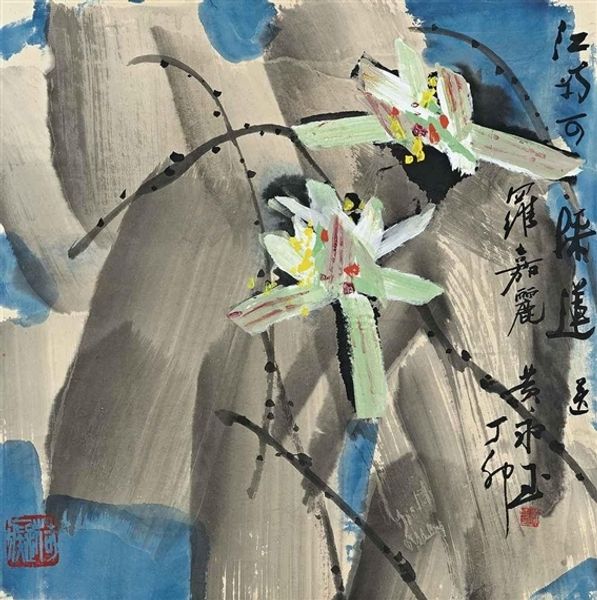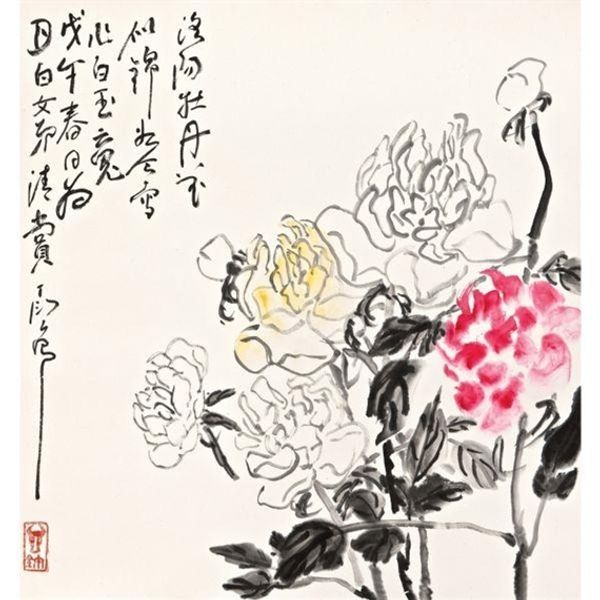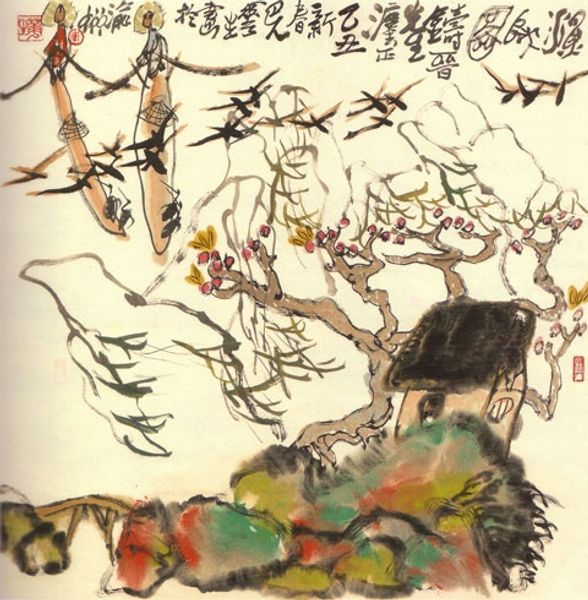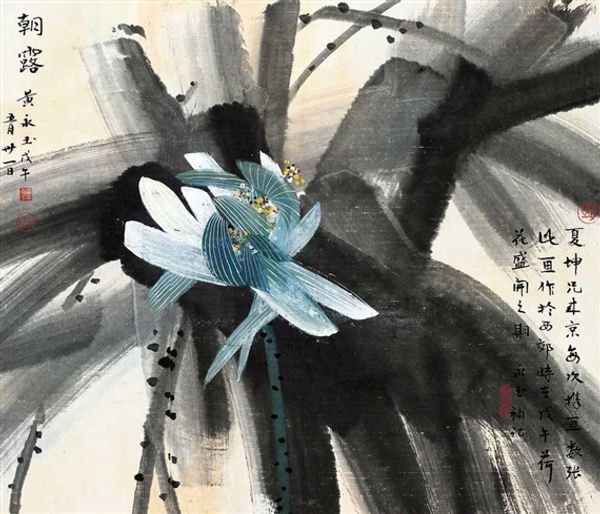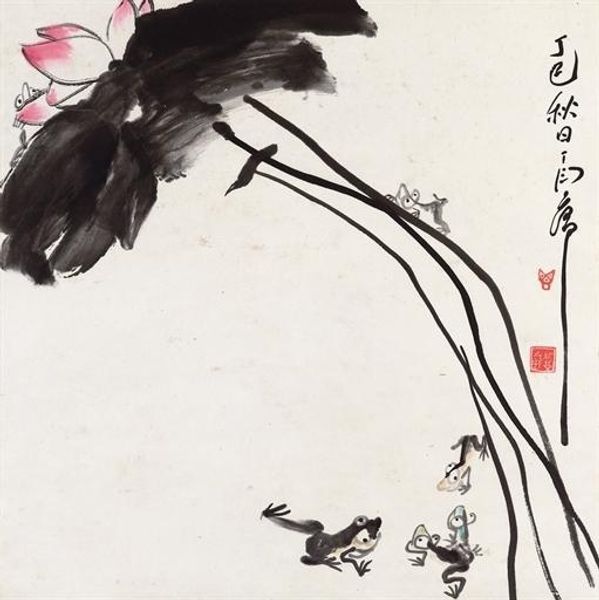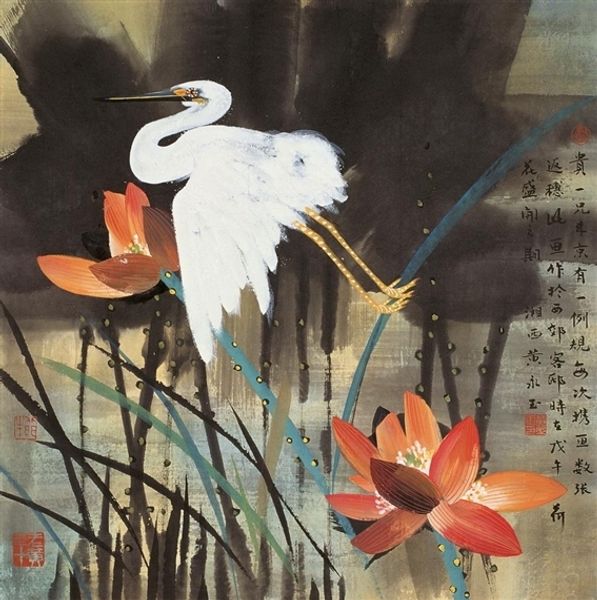
Copyright: Huang Yongyu,Fair Use
Editor: Before us we have Huang Yongyu's "Lotus," a watercolor painting from 2002. The brushstrokes feel so free and the colours, vibrant, like a fleeting memory of summer. How do you interpret this work, seeing beyond the pretty flowers? Curator: What I see here is not just a representation of lotuses, but a subtle commentary on cultural resilience and artistic freedom. Lotus flowers, especially in Asian art, have profound symbolic meanings – purity, rebirth, spiritual awakening. Huang Yongyu created this artwork after China's cultural revolution when a generation of artists fought for creative expression. Look closely. Does the impressionistic style, and naive art elements also reflect how marginalized groups create visibility? Editor: It’s interesting that you mention artistic freedom... Is there any other connection to society in general? Curator: Certainly. In this historical context, Yongyu’s Lotus serves as a testament to his endurance after periods of persecution and censorship. After the Cultural Revolution, the lotus also embodies the concept of resisting dominant power structures. Also, think about where a Lotus takes root -- often in muddy water, but is unstained by that environment. In what way does it serve as metaphor to our contemporary struggles for social justice, ecological conservation, and decolonization, can we draw inspiration from its inherent beauty? Editor: Wow, I never considered it that way. So, these flowers are kind of a quiet statement of defiance and hope for change? Curator: Exactly. Art provides both inspiration and an outline for us to change. Art allows a language to represent people who have felt rejected. And art invites conversations to broaden representation of overlooked cultural references. Editor: That definitely adds another layer to my appreciation. It’s amazing how one image can speak to so many cultural and social issues. Curator: Indeed. Huang Yongyu's lotus reminds us of the potent intersection of art, activism, and cultural memory. By recognizing cultural context, historical background, and visual compositions, we appreciate how this artwork's relevance in society lasts over time.
Comments
No comments
Be the first to comment and join the conversation on the ultimate creative platform.
